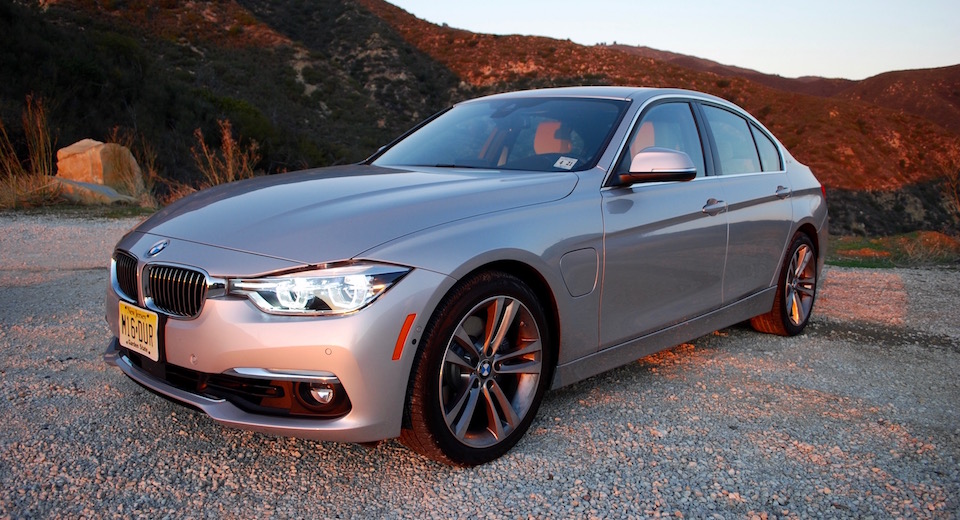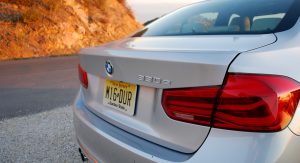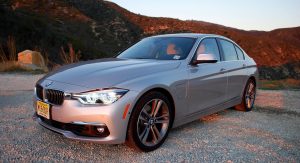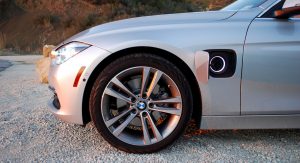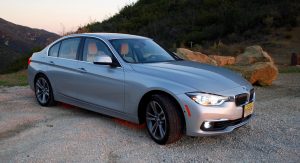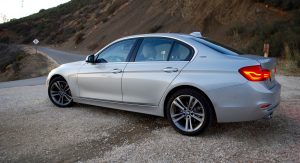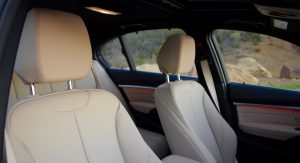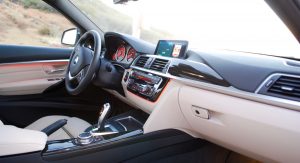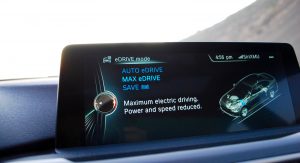The BMW 330e might be the immediate future.
Take an immensely popular package and make it a plug-in hybrid and you might have the official car of well-to-do environmental lawyers. But does it work? How does a hefty pack of batteries affect the 3-series’ legendary dynamics?
We’ve been testing a BMW 330e iPerformance (technically a 2016 330e that does without the iPerformance moniker, but it’s pretty much identical to a ‘17). Here are some initial thoughts.
The little giveaways
It’s pretty blink-and-miss it, but certain eDrive decals on the trunk lid and rear quarter panels, as well as the door to the charging port, are the only hints this isn’t your average 3-series. I thought most people would ignore it until someone literally ran up to me to ask me what I thought of the car.
And the fact you can drive around in near silence makes people stare and think there’s something wrong with your BMW.
Looks that don’t grow stale
The 2016 nip-tuck to the 3-series face has prolonged what is a handsome car, even without the popular M Sport additions. A silver 3-series is pretty timeless, right?
Please, weight
While its combined output of 248 horsepower sounds lively enough, it’s the same as the gas-only 330i – and that car isn’t saddled with 3,915 pounds to cart around. Launches are brisk in electric mode, but there’s a certain zest absent here. At least the added weight makes the ride supple.
Behind door number one #BMW #EV #electriccars
A photo posted by Zac Estrada (@zacestrada) on Dec 2, 2016 at 5:34pm PST
eDrive, you drive
In addition to the typical BMW driving mode selectors, there’s an easy eDrive button behind the gear selector to switch between hybrid and electric-only modes. And that’s really how you alter the personality of the 330e. It’s decently zippy as an EV, but the hybrid mode exposes some discord in the gas-electric transition. And in the save electricity gas-only mode, it feels like a boat anchor is pulling the whole thing down.
Cost to benefit
I’ve averaged about 30 mpg in combined driving and close to 35 on a decent highway jaunt. The concept of about 450 miles to a 10.8 gallon tank seems reasonable. But 20 miles of range seems stingy and it really does take all night charge the 330e up from flat on a household outlet. Spending about $3.50 on a public Level 2 charger plus parking costs seems to negate the gas station savings. I’m struggling to see who would benefit from the 330e’s plug-in abilities most, especially when a gas-only 330 is good for 27 mpg (and the 328d at 36), combined according to the EPA.
Oh and then there’s the price of the car. It’s roughly $45,000 before you dive into the trove of BMW extras. This well-equipped example has a generous helping of options, but comes in just below the $60,000 mark. This is before a federal tax credit of $4,001, which is less than what the Audi A3 e-tron qualifies for.
For now, what questions do you have about the 330e? Sound off in the comments.
Photos: Zac Estrada/Carscoops



